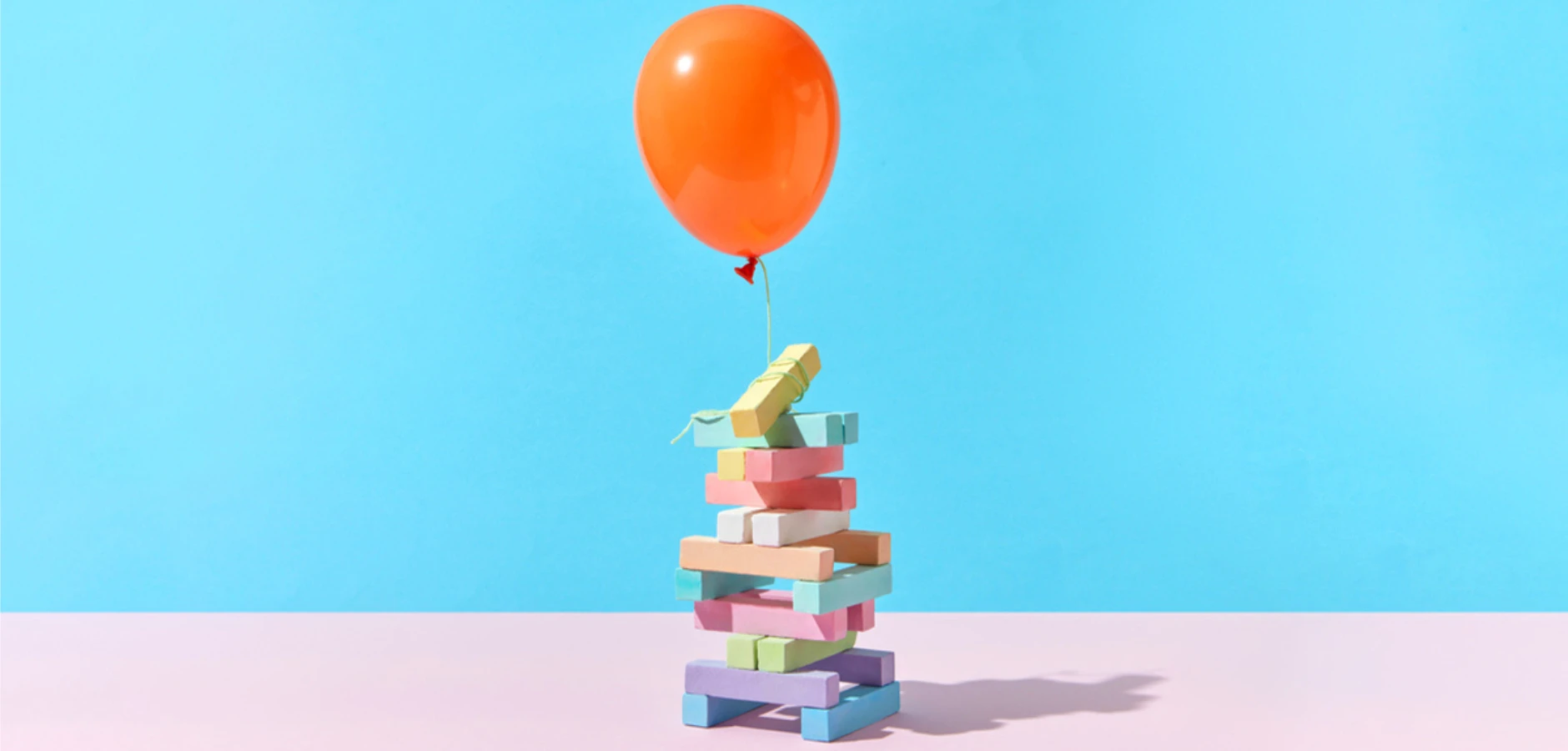Content:
- Find creators that align with your business goals
- Consider mixing in creators with smaller followings
- Combine UGC, paid social, and traditional influencer marketing
- Collaborate with creators who genuinely love your brand
- Negotiate favorable payment terms with creators
Whether a macro-influencer shares an invite-only night out on TikTok, or a micro-influencer gives a candid Instagram review for their skincare routine, creators influence the purchasing decisions of their followers throughout the buyer’s journey.
Influencer content is so effective that a reported 61 percent of consumers trust influencers’ recommendations—compared with 38 percent who trust branded social media content.
Brands can achieve success with any budget so long as they build a roadmap for recruiting, negotiating, and collaborating with influencers. Here are five best practices with insights from industry experts to build long-term creator partnerships.
Key takeaways
- Brands that align their goals and values with creators find the most success.
- Creators who are already brand advocates will create more authentic content.
- Micro- and nano-influencers sometimes have higher engagement rates.
- Influencer, UGC, and paid social marketing can combine for a well-rounded approach.
- Creators often prefer flat fee or hybrid payment models.
1. Find creators that align with your business goals
Creators who align with your brand and business goals are out there––it’s a matter of identifying them and building a mutually beneficial partnership. Your budget, target audience, and campaign goals all impact which creators align best with your business. First, consider the partner’s audience size and the number of people they may be able to reach.
Here’s a breakdown of the different types of creators:
- Nano-influencer (<10,000 followers). These are usually customers who love your brand and say good things about it, sometimes without compensation.
- Micro-influencer (10,000 to 49,999 followers). These influencers usually have small and niche audiences.
- Mid-influencer (50,000 to 99,000 followers). These creators are professional influencers who already have several brand collaborations.
- Macro-influencer (100,000 to 1 million followers). These are digital natives who likely grew their following and attained fame through social media.
- Mega-influencer (1 million+ followers). These are celebrities, such as actors, musicians, or artists who use social media to reach large audiences.
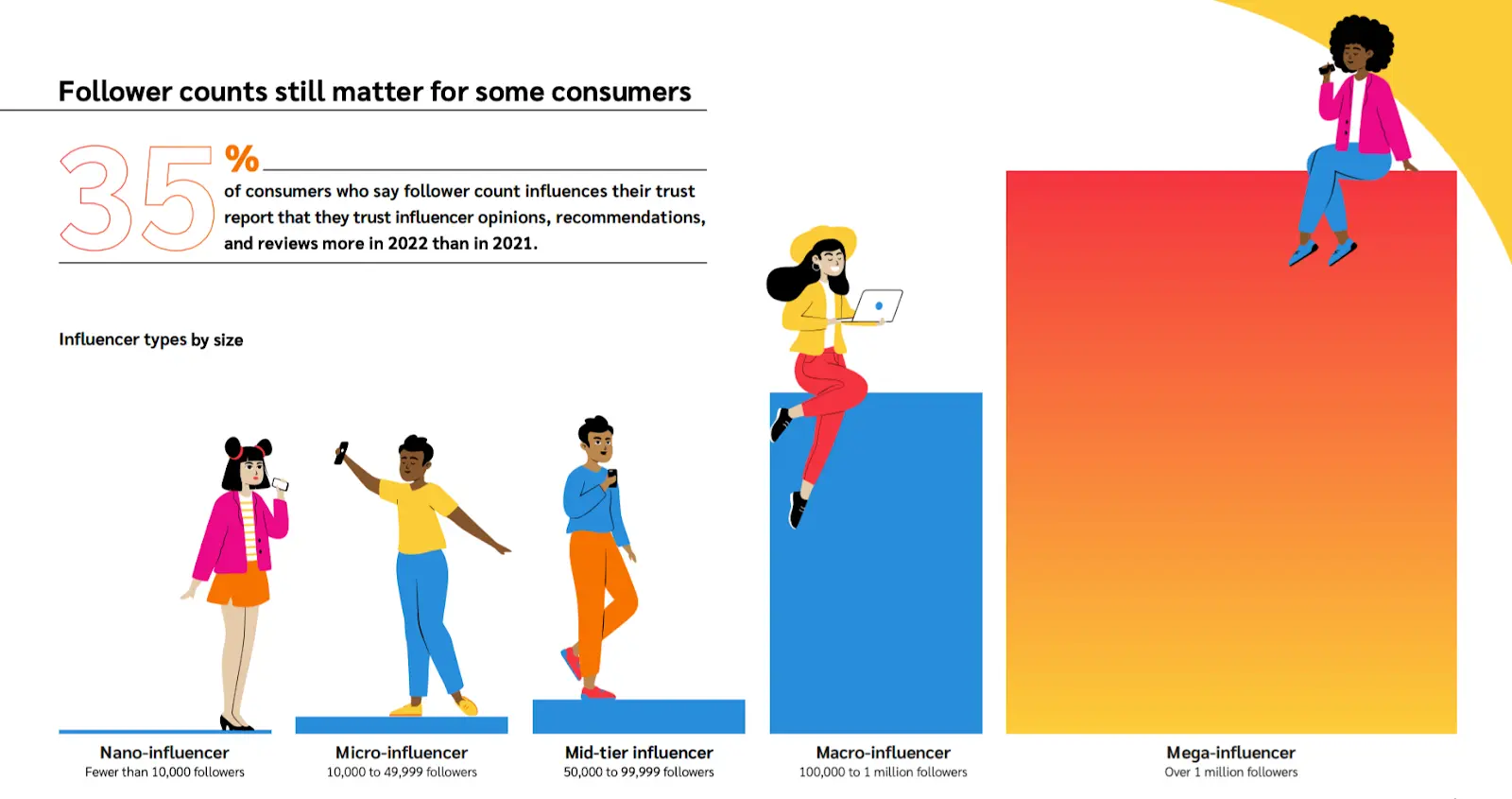
Source: The state of influencer marketing for consumers in 2023
Remember, a larger audience doesn’t always equal higher engagement. The best creators for your brand reach your target audience and generate engagement. They don’t necessarily need a massive following—just a more specific one.
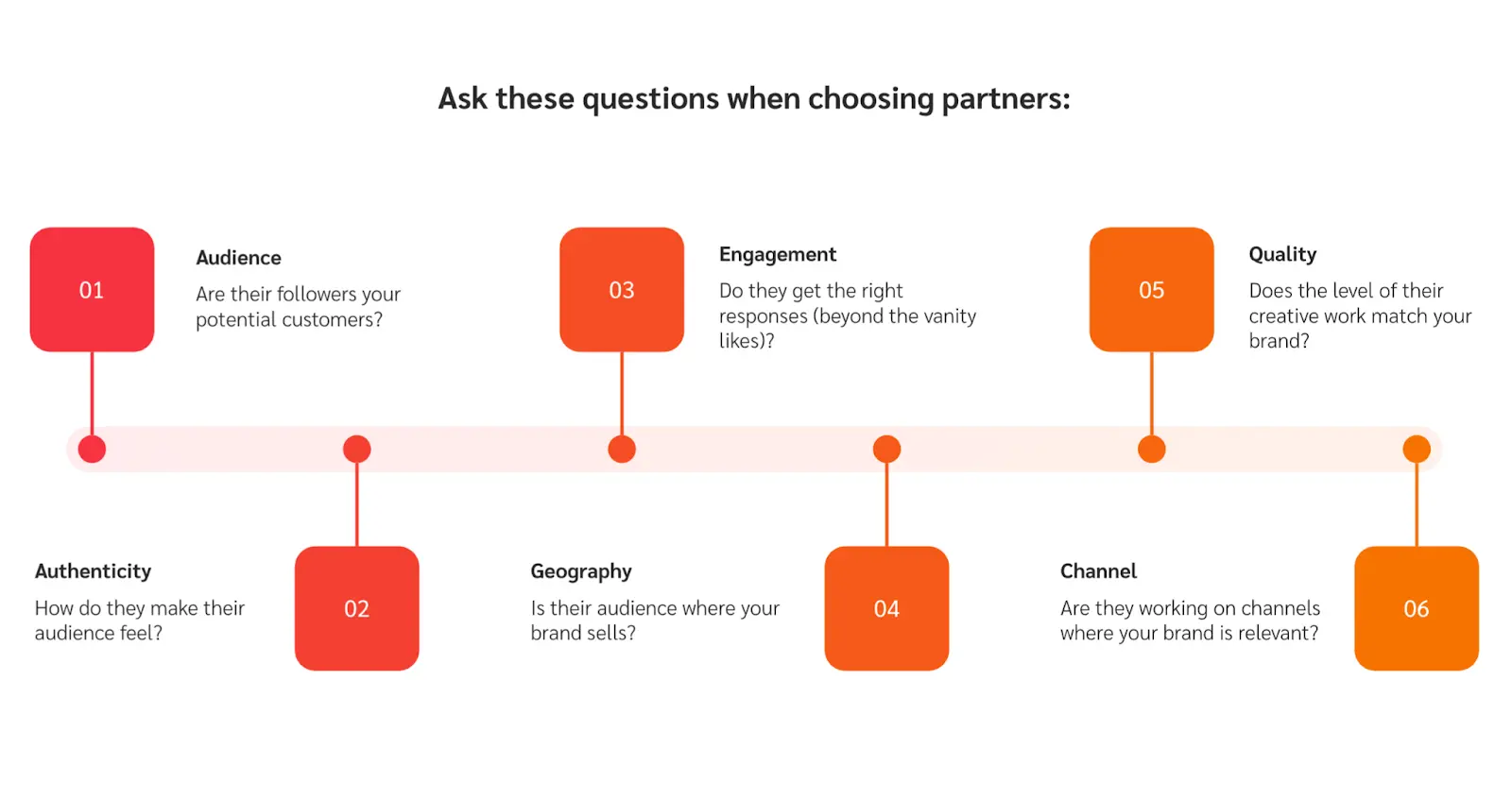
Your campaign strategy should depend on partnering with the right influencers who share the most relevant social media content on channels your target audience uses.
Evaluate the potential creator’s position carefully. Even if you love their work, their audience may not overlap with yours. Think about the country their audience lives in, their main interests, likely budgets, and how else they may match your goals.
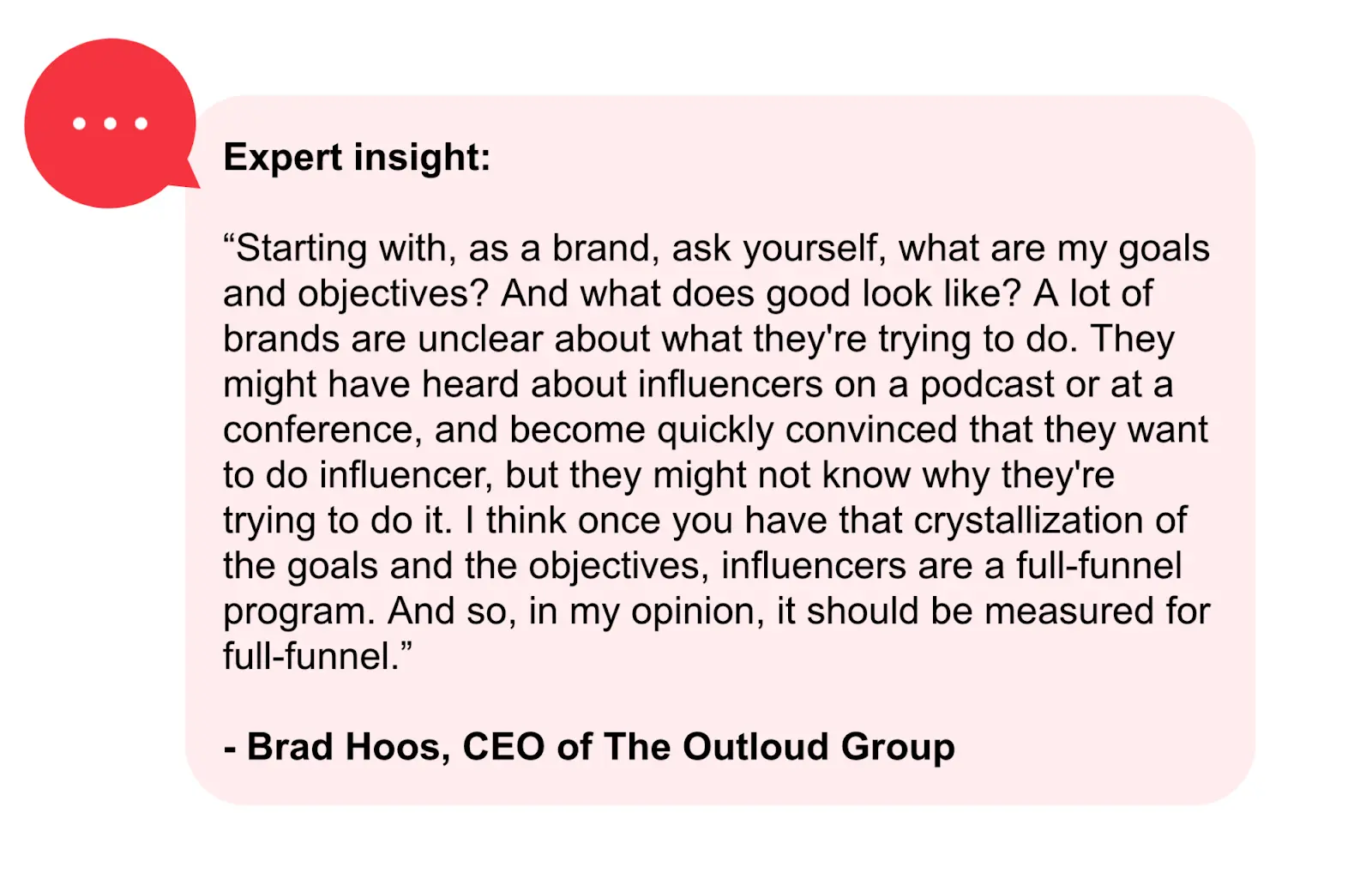
How to find creator partners using automation
A platform like impact.com / creator can help you find and recruit the right influencers for your brand.

Source: impact / creator marketplace
Here’s a five-step checklist for finding those hidden gems:
- Search for potential partners in a database. The impact.com / creator Marketplace includes over 100M influencers. The platform does most of the heavy lifting and includes details like the creator’s engagement rate, followers, and platforms they’re active on.
- Discover the right creators for your campaign. Look for partners that share the same values, speak your language, and are already fans of your product. It’s easy to set search parameters with impact.com / creator and find influencers who match your brand identity.
- Speed up your outreach. Save time using impact.com’s in-app messenger, or invite creators to join impact.com / creator to collaborate on your campaign via email. Directly contact all potential influencer partners from one platform.
- Automate your recruitment communications. Automated email workflows let you route partners down different message paths depending on their stage in your recruitment process.
- Perform due diligence. Evaluate your correspondence to see if they’re a good fit. Then, do due diligence on their content, audience, and other key metrics before making an offer.
2. Consider mixing in creators with smaller followings
What are micro- and nano-influencers?
Micro- and nano-influencers are individuals or accounts with small but loyal audiences.
Nano-influencers have less than 10,000 followers, and micro-influencers have 10,000 to 100,000 followers.
The benefits of micro- and nano-influencers
Greater authenticity. One of the biggest strengths of micro- and nano-influencers is their ability to be authentic. Even Gen Zs prefer micro-influencers over celebrities. They see these creators as superfans that bring real, earned credibility to brand endorsements.
Greater engagement and trust. Small-scale influencers often have active and engaged communities of followers, increasing their potential to influence purchase decisions. Consumers sometimes trust their recommendations more—with smaller audiences, these creators are more likely to engage one-on-one with followers.
Higher conversions. High engagement rates can lead to higher conversion rates and a better return on your investment. According to Forbes, micro-influencers have over a 20 percent higher conversion rate than macro-influencers.
Lower cost. Smaller creators are budget-friendly, making your marketing spend go further. In 2022, the average Instagram post from a micro-influencer ran $100 to $500 per post, while celebrities charged $10,000 upward.
More open to collaboration. These influencers may want to increase their following and reputation, so they tend to go the extra mile to impress brands. Since they have fewer messages in their inbox, they may be more responsive to feedback or changes.
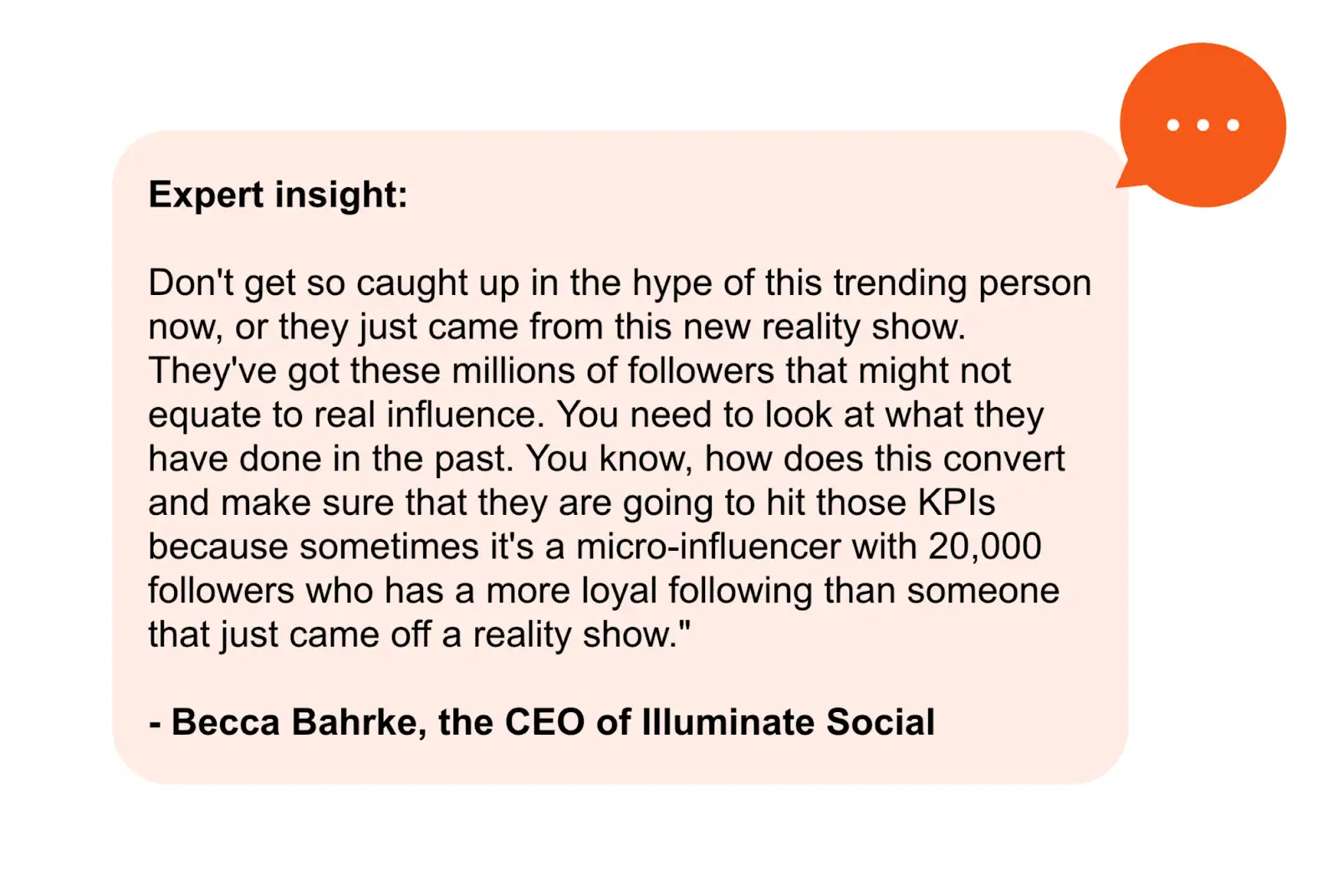
BBQGuys collaborated with small-scale influencers to increase engagement rates
Sometimes working with a mix of small and big influencers can work well. BBQGuys, a major online retailer for all things grill-related, took this approach.
The team recruited a mix of micro-and mid-tier influencers from the impact.com platform to create strong impressions and quality content. This strategy allowed the brand to capitalize on the higher reach of larger influencers while staying within budget by having smaller creators generate additional content.
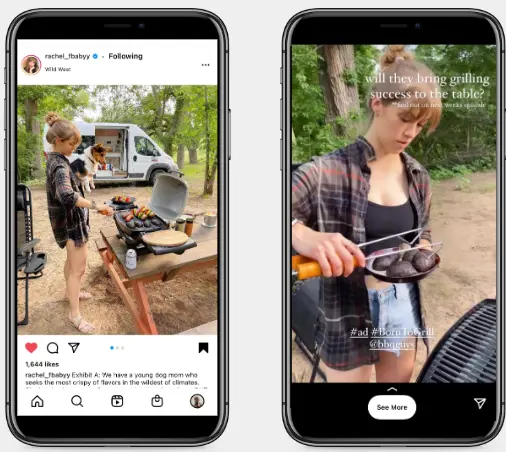
Source: Rachel Faulkner, @rachel_fbabyy
The program delivered 90.7k+ additional impressions above the initial goal and 2.9k+ engagements above the guaranteed content performance. Plus, the program earned a strong 5.5 percent engagement rate—more than two times the 2.12 percent benchmark for impact.com’s programs with a similar budget.
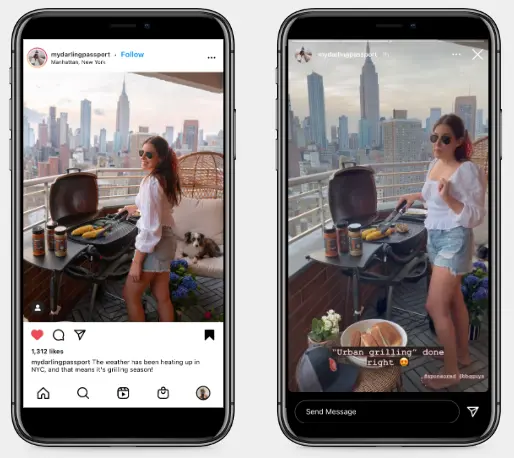
Source: Caitlin Palumbo, @mydarlingpassport
3. UCG, paid social, and traditional influencer marketing work better together
User-generated content (UGC) is created by a brands’ audience or customers. There isn’t usually a fee unless brands form a partnership with these UGC creators.
Influencer marketing is a paid collaboration either through direct payment or gifting. Brands can leverage paid social, so their UGC and influencer posts reach a larger audience beyond their organic reach.
Bringing these efforts together can save time and resources, and strengthen your campaign’s reach.
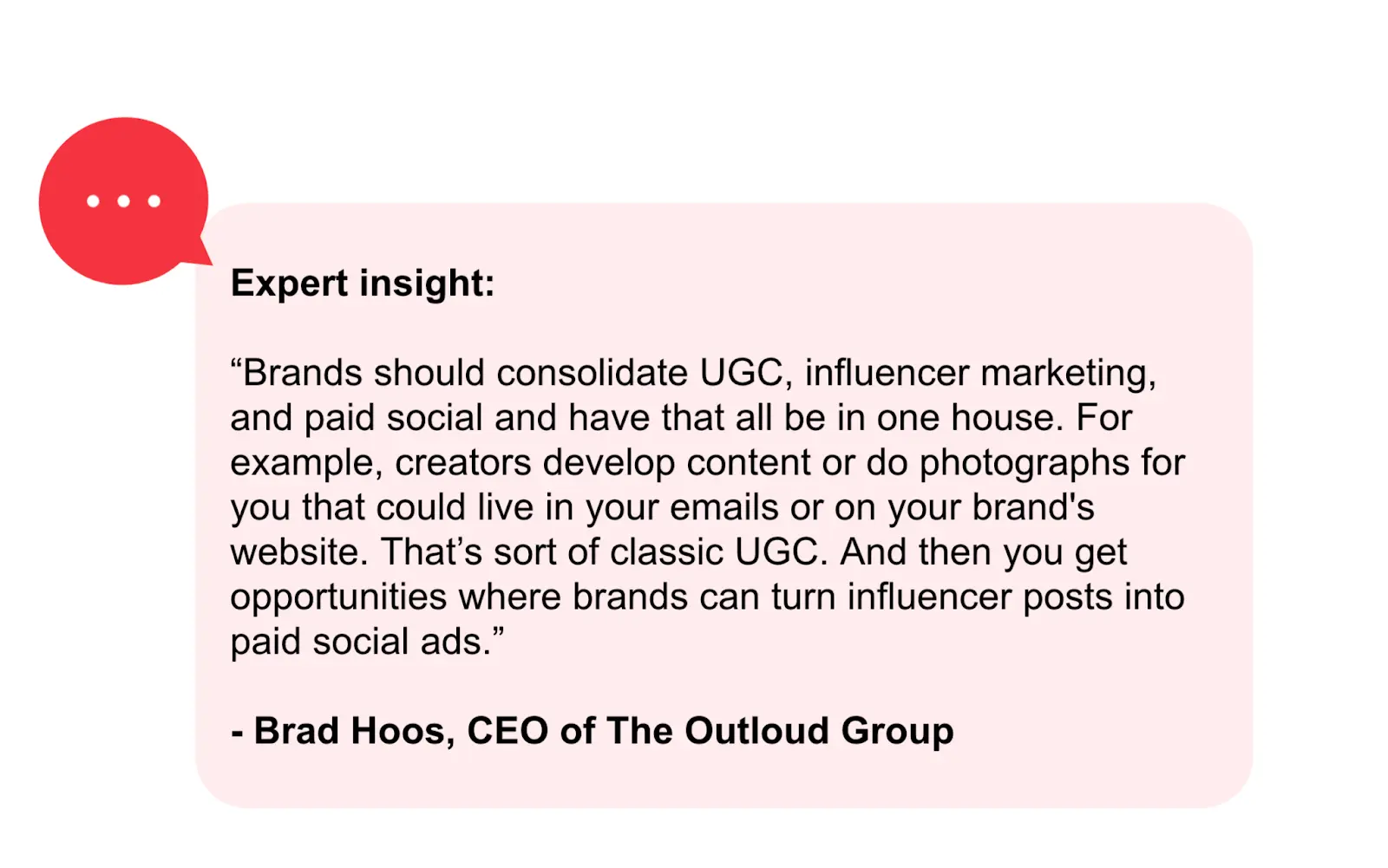
Automation makes combining UGC, paid social and influencer campaigns easier
Managing multiple tasks related to UGC, paid social, and influencer campaigns is much easier from one place. Tools like impact.com / creator have proactive messaging so that partners remain informed, productive, and on-brand. It centralizes communication with creators and enables automated workflows for sending emails, creating tasks, and changing their partner stage upon performing specific tasks.
For example, brands can message influencers to ask them to create photos and posts specifically for their brand’s newsletter or website (UCG). Brands can also ask permission to use the influencer’s posts in the brand’s marketing materials or on paid socials.
Using impact.com / creator to repurpose influencer content into UGC or paid social assets is straightforward. Brands can access and repurpose influencer creatives in the User Generated Content Library. This library allows brands to see all content previously published by their creator partners as part of a campaign and offers filters by usage rights, post date, campaign, social platform, and more.
4. Collaborate with creators who genuinely love your brand
Successful collaboration lies in working with those who would use your products or services, even without payment.
For influencer-led content to encourage conversions, people should believe the influencer is genuine. Overly polished or disingenuine posts won’t attract high-value customers. Creators who already buy into your product and advocate for your brand will appear authentic to your audience.
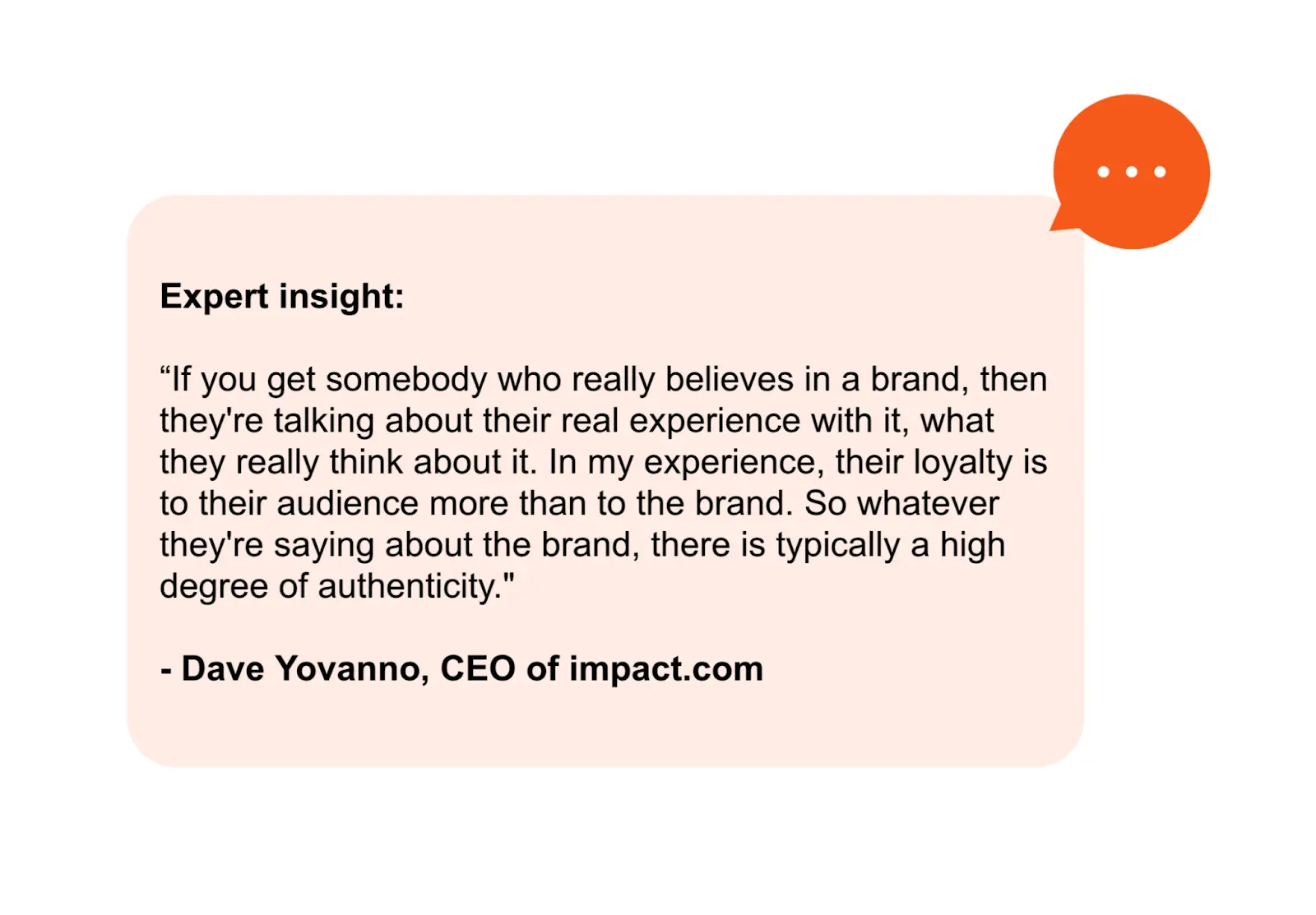
Creators should also share the same values as your brand. For example, if sustainability is your brand’s core value, it makes sense to work with environmentally conscious creators. For content to appear authentic and convincing, other social media users should believe the influencer practices what they preach.
Bowlero partnered with influencers to create authentic content
Bowlero, the largest operator of bowling centers worldwide, wanted to drive bookings with an influencer program for TikTok and Instagram. Their target audience included bowlers, foodies, and nightlife lovers.
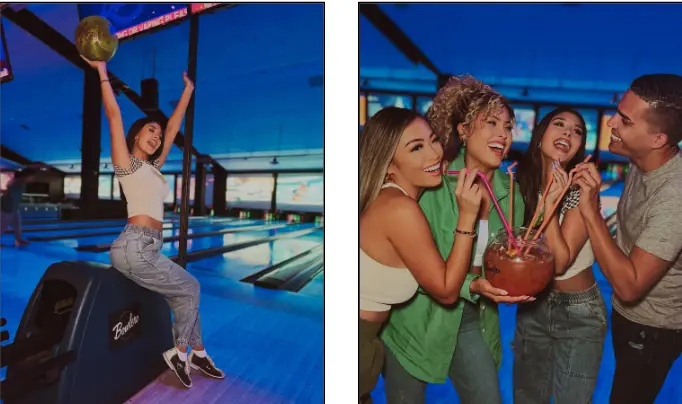
Source: Elizabeth Elias, @Elizabethelias
To get in front of this audience and encourage them to convert, Bowlero partnered with ten influencers. These creators featured content based on date nights, foodie spots, and local travel. The resulting content appeared authentic. Creators are happy, relaxed, and having a great time in a natural way—no polished, posed content here.
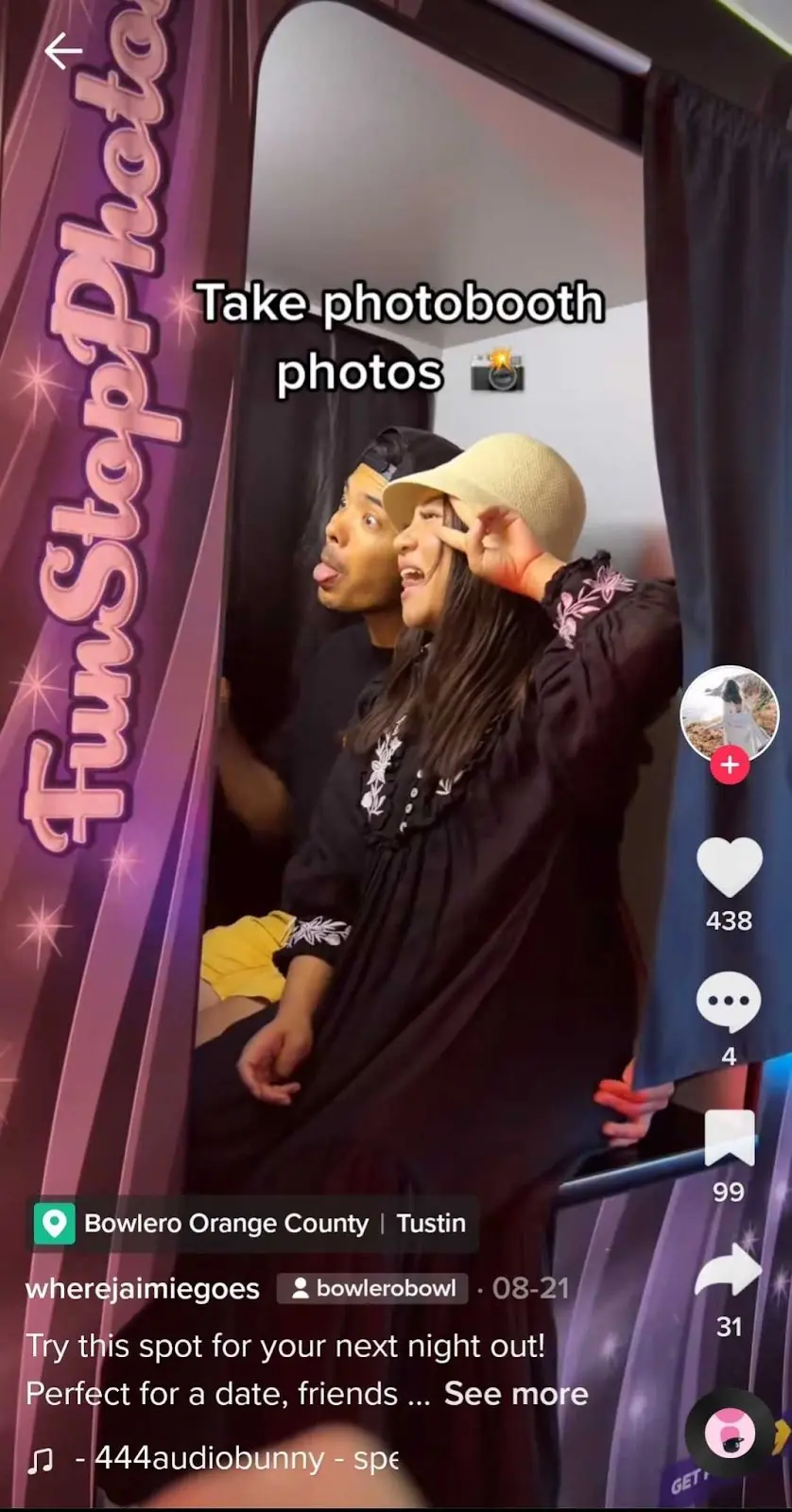
Source: @wherejamiegoes
Using authentic influencer content, Bowlero achieved impressive brand awareness and engagement results:
- 23k engagements
- More than 4.4 million impressions (more than 2x the promised number)
- Reach of 2.8m+ (four times the proposed estimate)
5. Negotiate favorable payment terms with creators
Creators need suitable contracts and payment terms to receive fair compensation for their work. Contracts and payments have different categories, each requiring personalization. Multiple factors influence how a creator negotiates their payment terms, including:
- Expertise of the creator
- Brand budget
- Follower size
- Brand relationship
- Channel affinity
- Content quality
- Engagement
- Performance
- Overall ROI
Different payment models
Choosing the right form of compensation helps brands attract top talent. Brands need to take an individualized payment approach across their network of influencer partners. One payment method may work best for specific partners and campaigns, while another may suit your next campaign better.
Brands can strengthen partner relationships by choosing from the following payment methods:
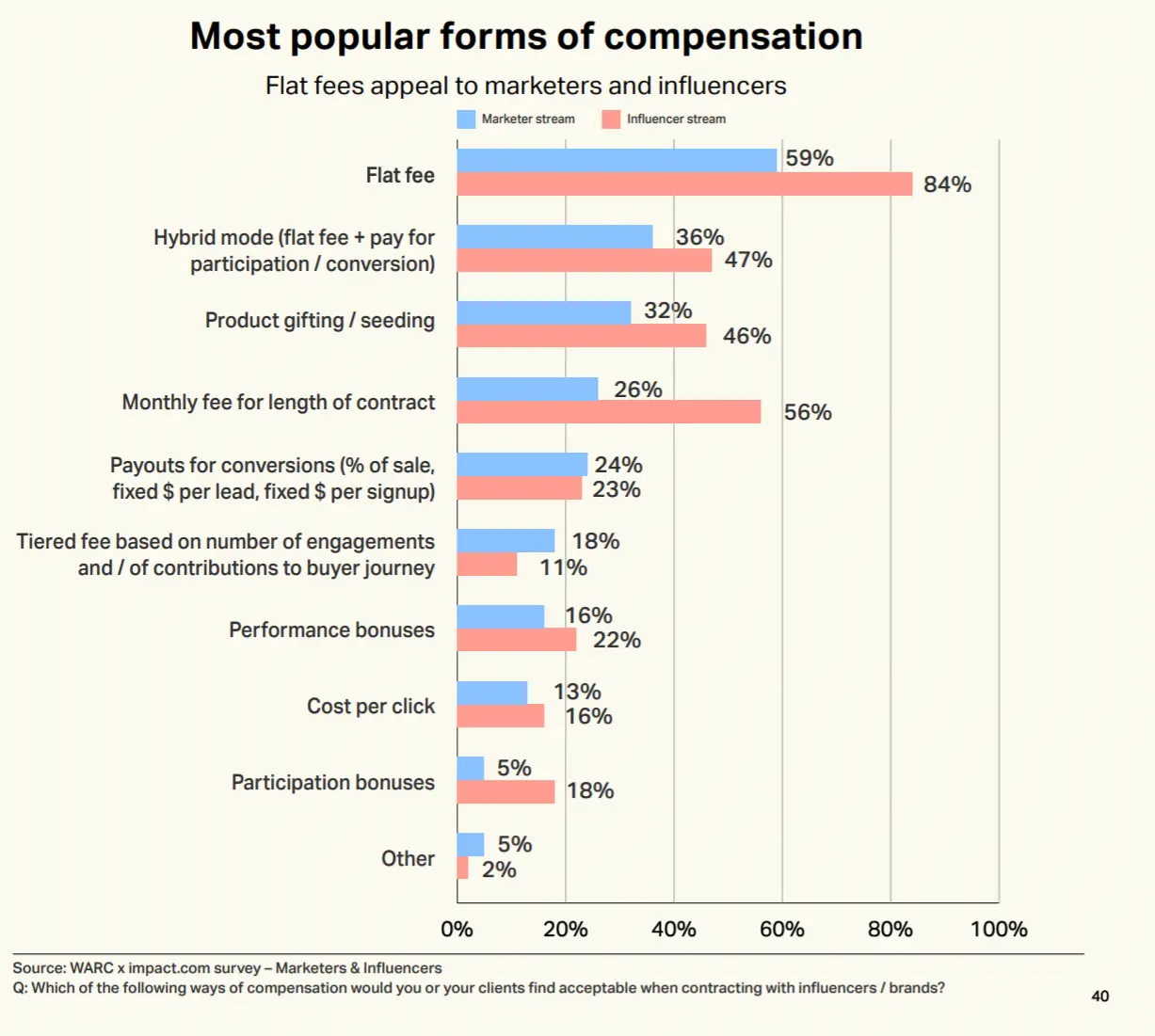
Source: WARC and impact.com white paper
The most popular payment models
A flat fee payment method ranks as the most popular –– 59 percent of marketers and 84 percent of influencers prefer this model. Creators often like this method as they receive guaranteed payment. Fixed payments also help marketers define a clear campaign budget.
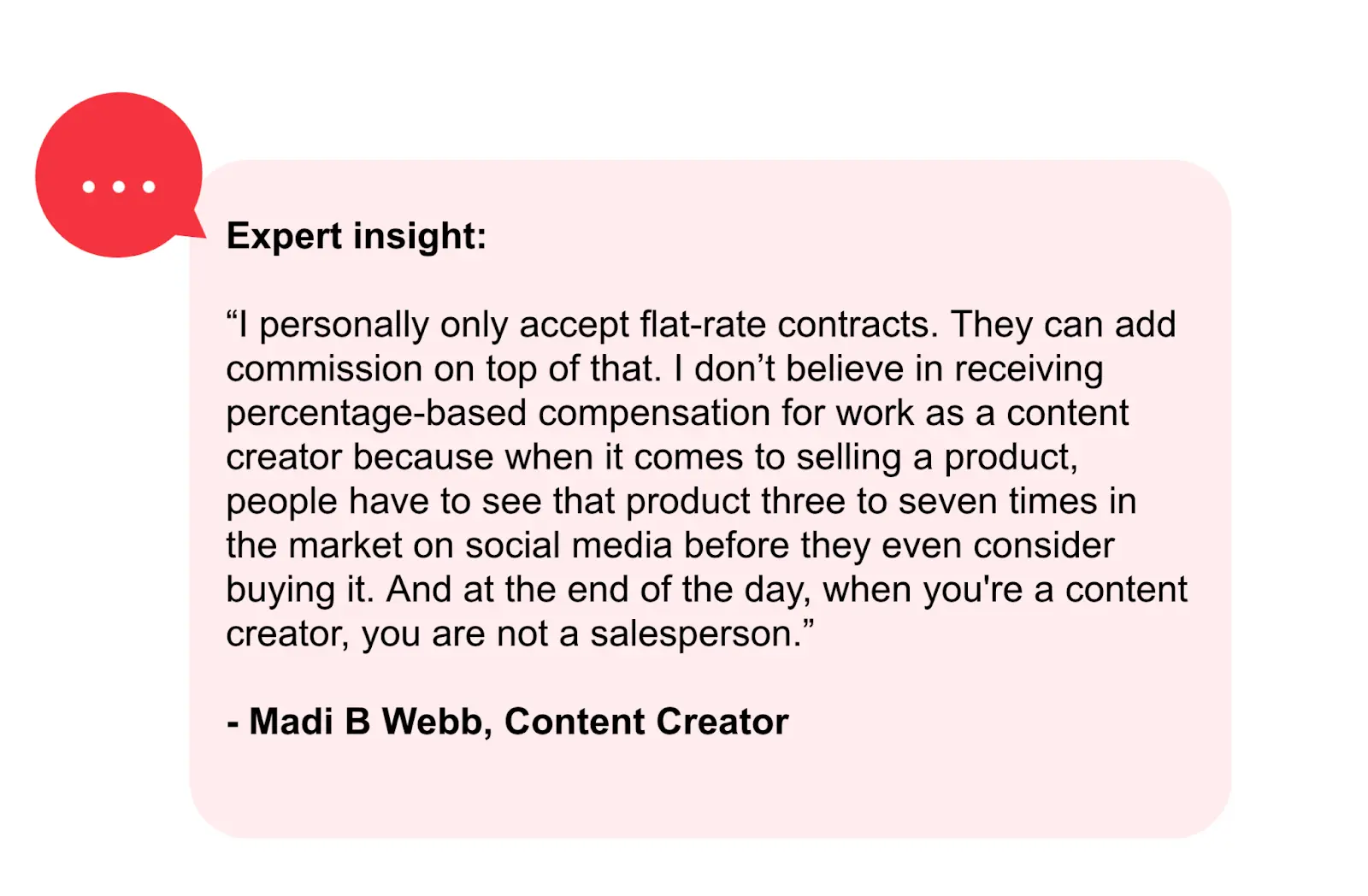
In the past, gifts were enough to attract marketing partners like influencers. While this can still be part of the deal, most creators want monetary payment.
Although Madi B prefers fixed rates, she notes how brands and influencers can work together to turn gifting into a paid opportunity:
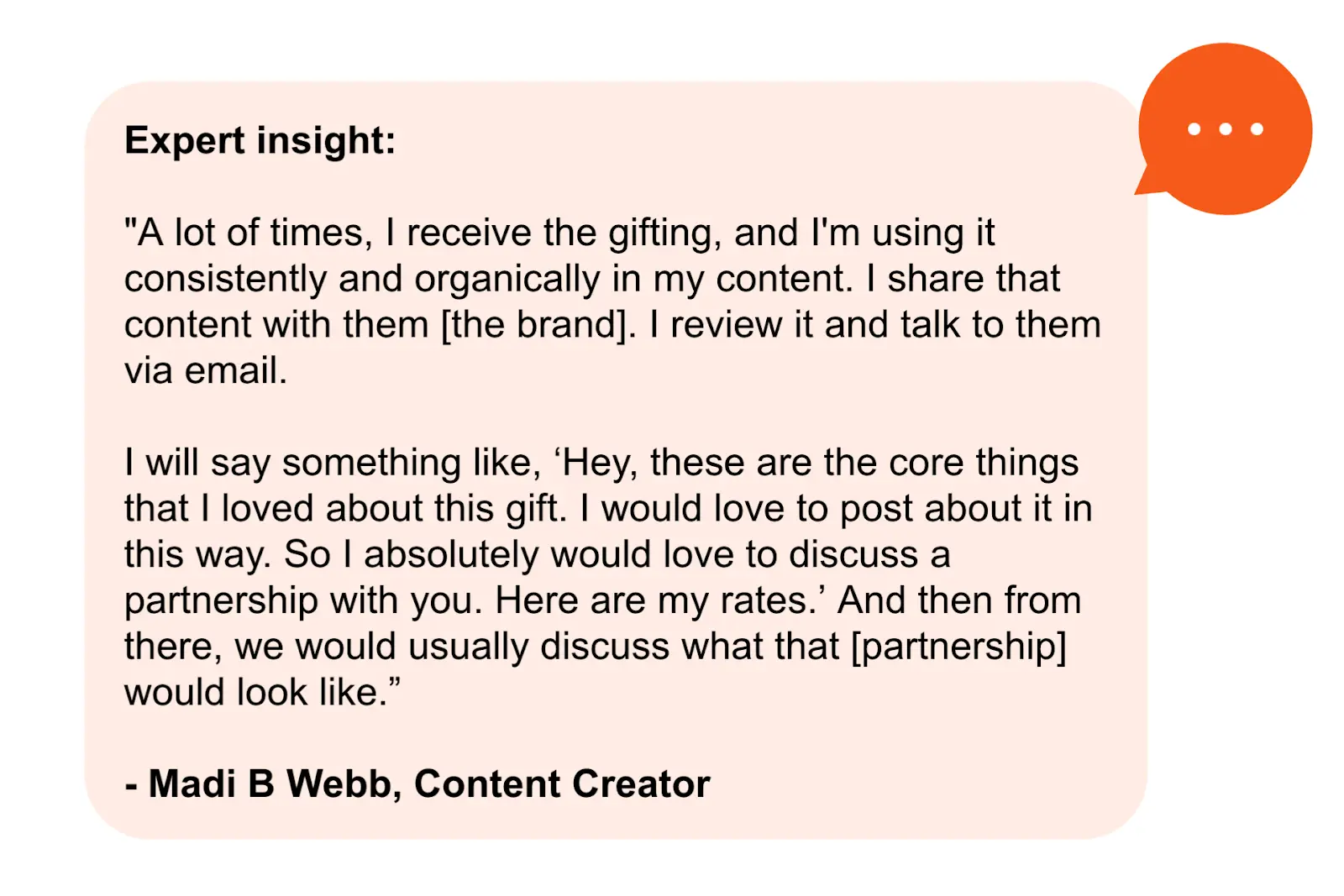
Although performance-only payments are not popular, they may work in certain instances. This payment model is easy to track and execute. Under this model, brands pay influencers when a user converts or triggers a “success event” including:
- Product purchase
- Subscription to a program or monthly service
- Booking of an appointment, flight, hotel room
- Reservation of a restaurant or tickets
- Downloading a digital product or app
From the marketers’ perspective, the onus is on the influencer to create posts that convert. Creators may be able to earn more in commission from successful campaigns than they would from a fixed-fee model.
Hybrid models that combine a flat fee with performance-based payment are becoming increasingly popular. This model can be a win-win––the brand pays the creator a fixed sum but sets sales targets that the creator must hit to receive a commission.
How to set up contracts and payment terms
Before starting a creator partnership, you need to finalize the contract terms. Tools like impact.com / creator make it easier to negotiate contracts and pay creators fairly.
Automating payments becomes simple and secure on a partnerships management platform like impact.com. The platform triggers payments when influencers hit predetermined milestones. Within the dashboard, brands and influencers can track when either party meets the contract terms. Influencers get automatically credited when they meet these terms. Creators can receive payment based on location, speed, and fees.
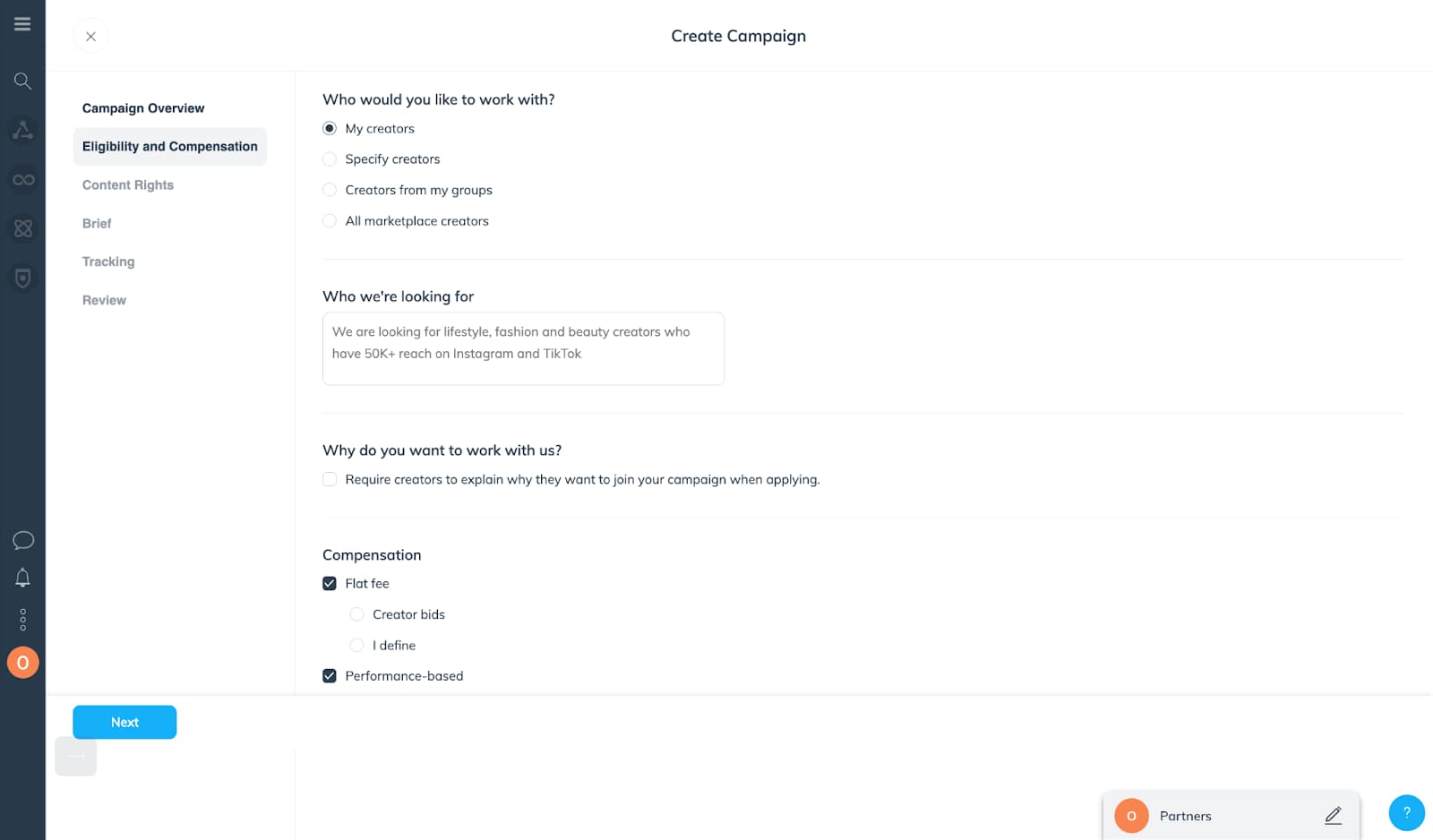
Source: Contract and Pay feature on impact / creator
Partner with like-minded influencers
Creators have the power to get your brand in front of a larger and more engaged target audience. The key to success is collaborating with like-minded partners who understand your brand and its core values. Negotiating fair payment terms will help incentivize influencers, and the right content creator marketplace can supercharge your campaigns to ensure a strong ROI.
The best part? Impact.com / creator has everything you need to set up your partnerships for success. Recruit, project manage, and pay creators from one central platform. Want to partner with partners that hit your business goals? Learn more about building strong partnerships with creators.
Keep on learning with these additional resources:
- Why brands should partner with UGC creators to build authentic connections [blog]
- Kick off your marketing program with influencers and affiliates [infographic]
- How the right content creator marketplace can supercharge your campaigns [blog]
- Influencer marketing in 2023: Three secrets to success [byline article]
- How to correctly compensate your influencers to beat the competition
- Customer testimonial: Savage X Fenty – Why use Impact to manage your influencer program?
- Aligning marketers and influencers: Shifting perspectives on influencer marketing across the funnel [research report]
- Discover untold treasures in 7 successful influencer stories [ebook]
- How to set up a successful influencer program [worksheet]
FAQs: How brands can find long-term success with creators
Why do brands work with creators?
Brands work with creators to achieve various business goals, such as boosting ROI, brand awareness, and audience engagement.
Why are long-term influencer partnerships better?
Influencer marketing is a long game. When a creator posts about a brand, people don’t normally buy straight away. Many will just start following the brand, and others will buy over time through retargeting campaigns. For this reason, long-term campaigns are usually more effective.
How to build long-term creator partnerships
Use automation to find creators that align with your business goals. Also, use automation to discuss sales, leads, traffic, clicks, engagement, and content direction with creators.
